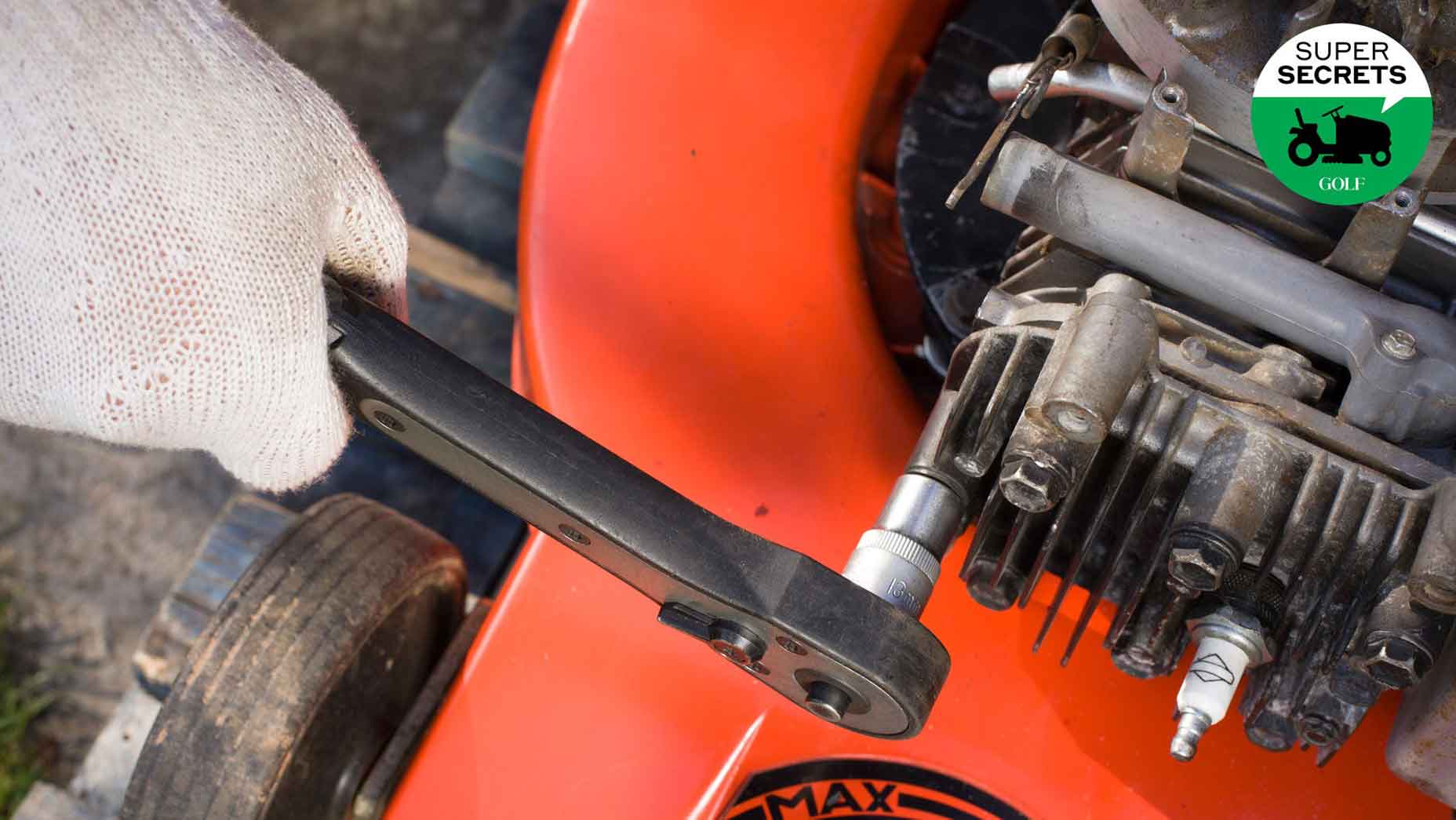Just because you’ve stashed your clubs for the winter doesn’t mean you’re done dealing with blades and edges. Your lawnmower needs your attention.
Bob Pruneau is the head mechanic at the Links at Brunello, in Nova Scotia, Canada, and the author of Bobs Shop, a blog about turf-equipment repair. Here are 7 simple steps he says homeowners should take to get their mowers ready to roll come spring.
1. Pressure wash
Left untouched, clumps of grass and caked-on mud can promote rust and rot. Chemical and fertilizer residues do no favors to the decks and frames. A quick top-to-bottom cleaning will help ensure that your mower gets a clean springtime bill of health.
2. Add a fuel stabilizer
Fuel degrades in prolonged storage, developing impurities that can gum up your mower’s inner-workings. Fuel stabilizer counteracts this. After adding it to your tank, Pruneau says it’s important to run the engine for about 5 minutes, giving the stabilizer time to reach the carburetor and other parts.
3. Fill the tank
Empty spaces can fill with air and moisture, which, in turn, can lead to rust. So, top off your tank, Pruneau says, unless you plan to stow your mower inside your home, in which case — for safety and insurance reasons — you’re better off letting the machine run dry before you put it away.
4. Oil the spark plugs
A teaspoon or so of motor oil in the spark plug holes will keep from them seizing up in frigid temperatures. This is especially important, Pruneau says, if you plan to leave your mower outside.
5. Pull the cord
If your mower has a rope-start engine, Pruneau recommends pulling the cord part way out before you stow the machine. That will get the valves up into the guide, providing a safeguard against rust.
6. Seize the day
If winter surprises you with a warm, sunny day, take advantage, Pruneau says, by pulling out your mower and firing up your engine to get the fluids pumping through the valves and tubes. Think of it as cardio for the machine.
7. Sharpen the blades
With most mowers, this is not brain surgery. Just pop off the blades, Pruneau says, and follow the manufacturer’s instructions. But if you don’t have the time or inclination, find a local pro to do it for you. You might even inquire at your local course. The maintenance shop might be willing to do the job.
